Parvalbumin+ and Npas1+ Pallidal Neurons Have Distinct Circuit Topology and Function
- PMID: 32868462
- PMCID: PMC7548687
- DOI: 10.1523/JNEUROSCI.0361-20.2020
Parvalbumin+ and Npas1+ Pallidal Neurons Have Distinct Circuit Topology and Function
Abstract
The external globus pallidus (GPe) is a critical node within the basal ganglia circuit. Phasic changes in the activity of GPe neurons during movement and their alterations in Parkinson's disease (PD) argue that the GPe is important in motor control. Parvalbumin-positive (PV+) neurons and Npas1+ neurons are the two principal neuron classes in the GPe. The distinct electrophysiological properties and axonal projection patterns argue that these two neuron classes serve different roles in regulating motor output. However, the causal relationship between GPe neuron classes and movement remains to be established. Here, by using optogenetic approaches in mice (both males and females), we showed that PV+ neurons and Npas1+ neurons promoted and suppressed locomotion, respectively. Moreover, PV+ neurons and Npas1+ neurons are under different synaptic influences from the subthalamic nucleus (STN). Additionally, we found a selective weakening of STN inputs to PV+ neurons in the chronic 6-hydroxydopamine lesion model of PD. This finding reinforces the idea that the reciprocally connected GPe-STN network plays a key role in disease symptomatology and thus provides the basis for future circuit-based therapies.SIGNIFICANCE STATEMENT The external pallidum is a key, yet an understudied component of the basal ganglia. Neural activity in the pallidum goes awry in neurologic diseases, such as Parkinson's disease. While this strongly argues that the pallidum plays a critical role in motor control, it has been difficult to establish the causal relationship between pallidal activity and motor function/dysfunction. This was in part because of the cellular complexity of the pallidum. Here, we showed that the two principal neuron types in the pallidum have opposing roles in motor control. In addition, we described the differences in their synaptic influence. Importantly, our research provides new insights into the cellular and circuit mechanisms that explain the hypokinetic features of Parkinson's disease.
Keywords: 6-OHDA; Parkinson's disease; basal ganglia; globus pallidus; motor control; subthalamic nucleus.
Copyright © 2020 the authors.
Figures
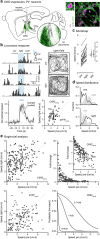

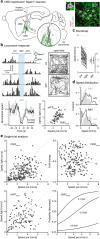
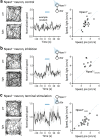
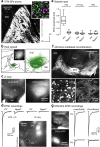
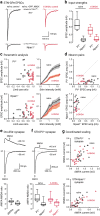
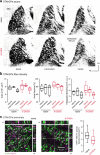
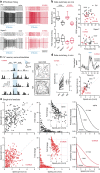
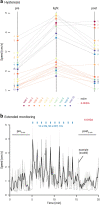
Similar articles
-
Dissociable Roles of Pallidal Neuron Subtypes in Regulating Motor Patterns.J Neurosci. 2021 May 5;41(18):4036-4059. doi: 10.1523/JNEUROSCI.2210-20.2021. Epub 2021 Mar 17. J Neurosci. 2021. PMID: 33731450 Free PMC article.
-
Striatal Direct Pathway Targets Npas1+ Pallidal Neurons.J Neurosci. 2021 May 5;41(18):3966-3987. doi: 10.1523/JNEUROSCI.2306-20.2021. Epub 2021 Mar 17. J Neurosci. 2021. PMID: 33731445 Free PMC article.
-
Npas1+ Pallidal Neurons Target Striatal Projection Neurons.J Neurosci. 2016 May 18;36(20):5472-88. doi: 10.1523/JNEUROSCI.1720-15.2016. J Neurosci. 2016. PMID: 27194328 Free PMC article.
-
The external globus pallidus: progress and perspectives.Eur J Neurosci. 2016 May;43(10):1239-65. doi: 10.1111/ejn.13196. Epub 2016 Mar 28. Eur J Neurosci. 2016. PMID: 26841063 Free PMC article. Review.
-
Functional connectivity and integrative properties of globus pallidus neurons.Neuroscience. 2011 Dec 15;198:44-53. doi: 10.1016/j.neuroscience.2011.07.050. Epub 2011 Jul 27. Neuroscience. 2011. PMID: 21835227 Free PMC article. Review.
Cited by
-
A review of temporal interference, nanoparticles, ultrasound, gene therapy, and designer receptors for Parkinson disease.NPJ Parkinsons Dis. 2024 Oct 23;10(1):195. doi: 10.1038/s41531-024-00804-0. NPJ Parkinsons Dis. 2024. PMID: 39443513 Free PMC article. Review.
-
Divergent pallidal pathways underlying distinct Parkinsonian behavioral deficits.Nat Neurosci. 2021 Apr;24(4):504-515. doi: 10.1038/s41593-021-00810-y. Epub 2021 Mar 15. Nat Neurosci. 2021. PMID: 33723433 Free PMC article.
-
Spatiomolecular Characterization of Dopamine D2 Receptors Cells in the Mouse External Globus Pallidus.Curr Neuropharmacol. 2024;22(9):1528-1539. doi: 10.2174/1570159X21666230720121027. Curr Neuropharmacol. 2024. PMID: 37475558 Free PMC article.
-
Coordinated reset stimulation of plastic neural networks with spatially dependent synaptic connections.Front Netw Physiol. 2024 May 28;4:1351815. doi: 10.3389/fnetp.2024.1351815. eCollection 2024. Front Netw Physiol. 2024. PMID: 38863734 Free PMC article.
-
Distinct mechanisms of CB1 and GABAB receptor presynaptic modulation of striatal indirect pathway projections to mouse globus pallidus.J Physiol. 2023 Jan;601(1):195-209. doi: 10.1113/JP283614. Epub 2022 Dec 8. J Physiol. 2023. PMID: 36412169 Free PMC article.
References
-
- Abdi A, Mallet N, Mohamed FY, Sharott A, Dodson PD, Nakamura KC, Suri S, Avery SV, Larvin JT, Garas FN, Garas SN, Vinciati F, Morin S, Bezard E, Baufreton J, Magill PJ (2015) Prototypic and arkypallidal neurons in the dopamine-intact external globus pallidus. J Neurosci 35:6667–6688. 10.1523/JNEUROSCI.4662-14.2015 - DOI - PMC - PubMed
-
- Abecassis ZA, Berceau BL, Win PH, García D, Xenias HS, Cui Q, Pamukcu A, Cherian S, Hernández VM, Chon U, Lim BK, Kim Y, Justice NJ, Awatramani R, Hooks BM, Gerfen CR, Boca SM, Chan CS (2020) Npas1(+)-Nkx2.1(+) neurons are an integral part of the cortico-pallido-cortical loop. J Neurosci 40:743–768. 10.1523/JNEUROSCI.1199-19.2019 - DOI - PMC - PubMed
-
- Adam EM, Johns T, Sur M (2020) Cortico-subthalamic projections send brief stop signals to halt visually-guided locomotion. bioRxiv. doi: 10.1101/2020.02.05.936443. - DOI
-
- Albin RL, Young AB, Penney JB (1995) The functional anatomy of disorders of the basal ganglia. Trends Neurosci 18:63–64. - PubMed
Publication types
MeSH terms
Substances
Grants and funding
LinkOut - more resources
Full Text Sources
Molecular Biology Databases
